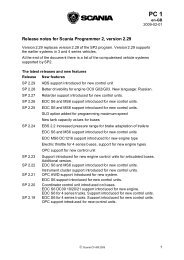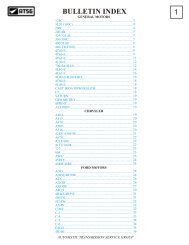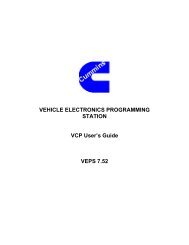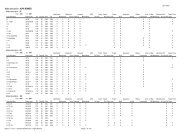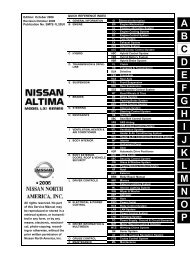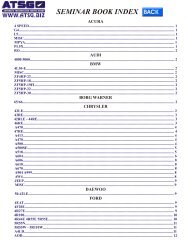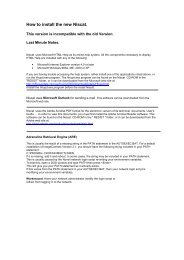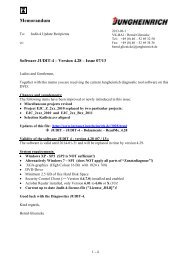Vogele Basic Training Hydraulics & Electrics
Vogele Basic Training Hydraulics & Electrics
Vogele Basic Training Hydraulics & Electrics
You also want an ePaper? Increase the reach of your titles
YUMPU automatically turns print PDFs into web optimized ePapers that Google loves.
H.11.0 Viscosity classes<br />
SAE classification<br />
The SAE viscosity classes were specified by the „Society of Automotive Engineers“ in order to<br />
facilitate consumers in choosing the right oil. The classes SAE xx and SAE xxW (Winter) were specified.<br />
In this context, the smaller numbers stand for low viscosity oils and the larger numbers for more<br />
viscous oils.<br />
The system could no longer be applied after the introduction of multi-viscosity oils and was consequently<br />
expanded.<br />
The format now reads SAE xxW-yy.<br />
This syntax means that the properties of the respective oil at 0°F (approx. -18°C) correspond to those<br />
of a single-viscosity oil with the viscosity class SAE xxW, and at 120°F (approx. 99°C) to an SAE yy oil.<br />
In order to achieve these properties, multi-viscosity oils contain polymers that change their spatial<br />
structure as a function of the temperature.<br />
A cheap standard mineral oil usually has a viscosity of SAE 20W-40 or 15W-40.<br />
High-quality synthetic oils nowadays reach viscosities of 0W-40, 5W-50 or 10W-60.<br />
In principle, every oil can be used that exceeds the specified viscosity range.<br />
For instance, if a 20W-40 oil is specified, the motor would also run with a 10W-40 or 20W-50 oil<br />
without suffering any damage.<br />
The viscosity describes only one property of an oil and contains absolutely no information on quality,<br />
although it is important to maintain the correct oil pressure.<br />
An excessively high oil pressure can damage seals, while an excessively low oil pressure can damage<br />
the bearings.



